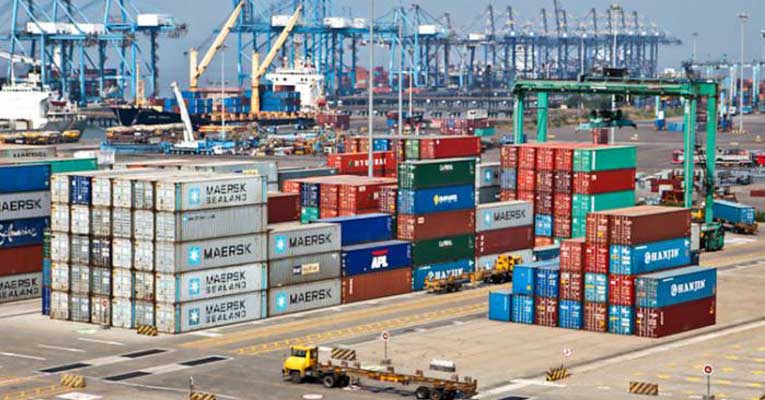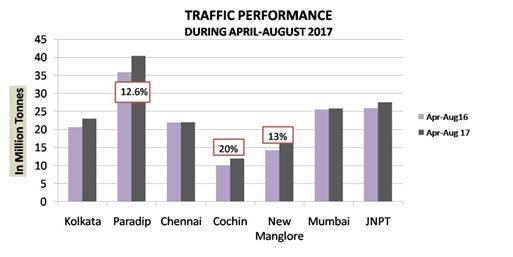Technology enhancement boosts productivity at India’s major ports
September 11, 2017: Technological advancement for modernization of major ports and reforms for enhancing ease of doing business are driving and sustaining the growth trend line at India’s major ports, said the Ministry of Shipping.

September 11, 2017: Technological advancement for modernization of major ports and reforms for enhancing ease of doing business are driving and sustaining the growth trend line at India’s major ports, said the Ministry of Shipping. The country’s 12 major ports together handled 273.96 million tonnes of cargo between April to August, 2017 as against 265.31 million tonnes handled during the corresponding period of previous year, an overall growth of 3.26 percent.
Seven Ports (Kolkata, Paradip, Chennai, Cochin, New Mangalore, Mumbai and JNPT) registered positive growth in traffic during the period April to August 2017.
Cochin Port led the pack with 19.99 percent growth followed by New Mangalore with 13.26 percent, Paradip with 12.57 percent, Kolkata [incl. Haldia] with 11.45 percent and JNPT with 6.18 percent. Cochin Port growth was mainly due to increase in traffic of POL (27.99 percent) and Containers (12.79 percent). In Kolkata Port, overall growth was positive i.e. 11.45 percent. Haldia Dock Complex (HDC) registered positive growth of 19.08 percent, mainly due to increase in iron ore traffic.
During the period April to August, 2017, Kandla Port handled the highest volume of traffic i.e. 43.99 million tonnes (16.06 percent share), followed by Paradip with 40.37 million tonnes (14.74 percent share), JNPT with 27.54 million tonnes (10.05 percent share), Mumbai with 25.84 million tonnes (9.43 percent share), and Visakhapatnam with 25.45 Million Tonnes (9.29 percent share). Together, these five ports handled around 60 percent of Major Port Traffic.

Source: Indian Port Association
Commodity-wise percentage share of POL was maximum i.e. 34.00 percent, followed by container (20.17 percent), thermal & steam coal (12.82 percent), other misc. cargo (12.12 percent), coking & other coal (7.49 percent), iron ore & pellets (6.84 percent), other liquid (4.29 percent), finished fertilizer (1.17 percent) and FRM (1.10 percent).
The RFID tagging at gates has been implemented at all ports. This enables seamless entry-exist of trucks and in-port movement to optimize cargo flow, besides enhancing security. Trucks as well as drivers’ entry-exist is recorded using RFID card system doing away with paperwork thus reducing human interface. This is one of the steps taken in order to benchmark major ports with globally renowned ports.
The ministry has also been proactively undertaking legislative reforms to weed out old obsolete laws and enhancing connectivity of ports to improve their efficiency under its Sagarmala Programme.



